We need your consent to use the individual data so that you can see information about your interests, among other things. Click "OK" to give your consent.
ASTM F2467-06(2013)
Standard Practice for Measuring Static Sealing Pressure Using Pressure-Indicating Film (PIF) in Transportation Applications
STANDARD published on 1.5.2013
The information about the standard:
Designation standards: ASTM F2467-06(2013)
Note: WITHDRAWN
Publication date standards: 1.5.2013
SKU: NS-53941
The number of pages: 2
Approximate weight : 6 g (0.01 lbs)
Country: American technical standard
Category: Technical standards ASTM
The category - similar standards:
Annotation of standard text ASTM F2467-06(2013) :
Keywords:
gasket, PIF, pressure, pressure-indicating film, ICS Number Code 55.040 (Packaging materials and accessories)
Additional information
| Significance and Use |
|
5.1 This practice is a screening tool and should be used in conjunction with other more accurate real-time load-measuring techniques. 5.2 This practice covers the use of PIF, which is available in several load ranges. This practice also covers the use of a manual or automatic scanning device to read indicated load. 5.3 Limitations include those applications in which the PIF may be kinked, twisted, or buckled. PIF does not withstand elevated temperature, low temperature, or fluid aging and does not take into account any relaxation of bolts, gasket materials, or flange twisting, as it provides only the maximum attained pressure. |
| 1. Scope |
|
1.1 This practice covers a standard means for measuring initial static sealing pressure in transportation applications. 1.2 It uses a pressure-indicating film (PIF) that will record the maximum load imprint of the seal-to-flange interfaces. The imprints will vary in intensity based on load across and along the interface. 1.3 These imprints can be used to determine if initial load on the gasket is adequate to attain a seal. These imprints may also indicate correct bolt torque sequence. These imprints may also be used to determine if the mating surface waviness or local flatness meets gasket requirements. Roughness is rarely found by PIFs because peak-to-peak wavelengths are too short. PIF is very good at finding waviness (peak to peak > 2.5 mm) and local flatness dips. PIFs provide an approximation of maximum pressures, and do not take into account relaxation of the joint after the torque sequence. Other methods involving dynamic measurement should be used if flange loading after relaxation is desired. 1.4 This standard does not purport to address all of the safety concerns, if any, associated with its use. It is the responsibility of the user of this standard to establish appropriate safety and health practices and determine the applicability of regulatory limitations prior to use. |
Similar standards:
Historical
1.4.2012
Historical
1.4.2012
Historical
1.4.2012
Historical
1.4.2012
Historical
1.4.2012
Historical
1.4.2012
We recommend:
Technical standards updating
Do you want to make sure you use only the valid technical standards?
We can offer you a solution which will provide you a monthly overview concerning the updating of standards which you use.
Would you like to know more? Look at this page.


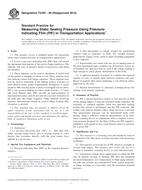
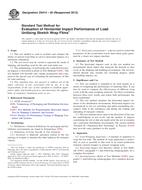 ASTM D5414-95(2012)..
ASTM D5414-95(2012).. ASTM D5415-95(2012)..
ASTM D5415-95(2012).. ASTM D5416-95(2012)..
ASTM D5416-95(2012)..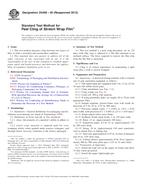 ASTM D5458-95(2012)..
ASTM D5458-95(2012)..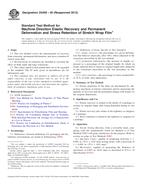 ASTM D5459-95(2012)..
ASTM D5459-95(2012)..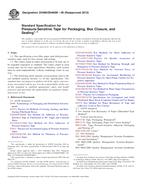 ASTM D5486/D5486M-06..
ASTM D5486/D5486M-06..
 Cookies
Cookies
